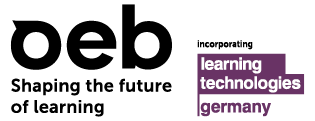

Active-learning-classroom (ALC) design is often listed as a top area of interest and of investment for higher-education institutions. In EDUCAUSE’s 2017 annual report titled “Higher Education’s Top 10 Strategic Technologies,” member institutions cited ALC design and construction as top investments (Brooks, 2017) Many learning technologists would agree that ALC’s should contain elements that support active learning, but would often disagree on a universal set of standards that every ALC should include.
Further, as shown in the exhaustive research completed by Freeman et al. (2014), active learning techniques are shown to support deep learning more comprehensively than traditional, lecture-style teaching methods. Original research conducted by the presenters showed that active learning classrooms are often better at supporting student engagement than traditional rooms, and one of the most persistent barriers to the adoption of active learning techniques is the lack of availability of rooms that well-support active learning.
Georgia State University, through the leadership of its Center for Excellence in Teaching and Learning, has developed a multi-year strategy of exploring, designing and implementing a variety of ALC solutions, each containing elements selected to address specific pedagogical needs, as documented in a discovery process conducted with each group of intended ALC faculty. The results is a portfolio of ALCs, located throughout our central campus, each providing a combination of technology, furniture and accessories selected to support teaching strategies of either a specific discipline or designed to serve as an open-access ALC.
For each of these classrooms, the process begins with the identification of an opportunity. Georgia State University rarely has an opportunity to build new classroom buildings, so we typically grow our classroom inventory by renovating existing spaces into suitable learning environments. Each new build-out or renovation is considered as an opportunity to convert the space to and ALC. For rooms that support discipline-specific teaching, a group of faculty from that discipline are interviewed so that our learning space specialists can select the ALC elements that will best support their teaching. We also conduct a physical walk-through of the space, with sample technology and furniture, allowing faculty to imagine how each element would contribute to their teaching.
This interactive and practical Knowledge Factory encourages each participant to put themselves in the role of ALC designer, and gives each participant an opportunity to design, with their colleagues, an actual ALC space, based on a real-world example experienced at Georgia State University. Participants can interview each other to simulate an actual faculty interview, gain insights on what’s needed in the classroom, and use provided design elements to craft a space plan to best support the intended faculty and students.
In any such complex project, support from a variety of campus groups will be needed. Representatives from Learning Technology, Facilities Planning, Campus Security, the Registrar’s Office and others must be included. Participants will role-play to bring to light the multiple challenges and solutions that each of these groups will experience in the design and support process. Each participant group’s design will be reviewed using these filters for analysis.
Presenters will share their own design that was built in response to the stated design challenge. Group feedback will be welcome, as we try to create better designs in each iteration process.
Brooks, D. (2017). Active learning classrooms: The top strategic technology for 2017. Retrieved from https://er.educause.edu/blogs/2017/3/active-learning-classrooms-the-top-strategic-technology-for-2017
Freeman, S., Eddy, S. L., McDonough, M., Smith, M. K., Okoroafor, N., Jordt, H., & Wenderoth, M. P. (2014). Active learning increases student performance in science, engineering, and mathematics. Proceedings of The National Academy of Sciences of the United States of America, 111(23), 8410-8415. doi:10.1073/pnas.1319030111

Lee Webster has been the Director of Learning and Production Environments at Georgia State University (GSU) since 2014 where is oversees the design, support, and implementation of centrally managed labs, classrooms, and collaborative spaces. His work at Georgia State has included focuses in active learning and innovation in space design. Lee work has focused on campus-wide partnerships and cost saving or adaptive reuse in learning spaces. Prior to assuming his role at GSU Lee was the Assistant Director of Classroom Technologies at Southern Polytechnic State University where he oversaw a team of professionals managing the suite of academic technology solutions for the University. Lee holds an MBA from Kennesaw State University and a bachelors of science in Information Technology from Southern Polytechnic State University.